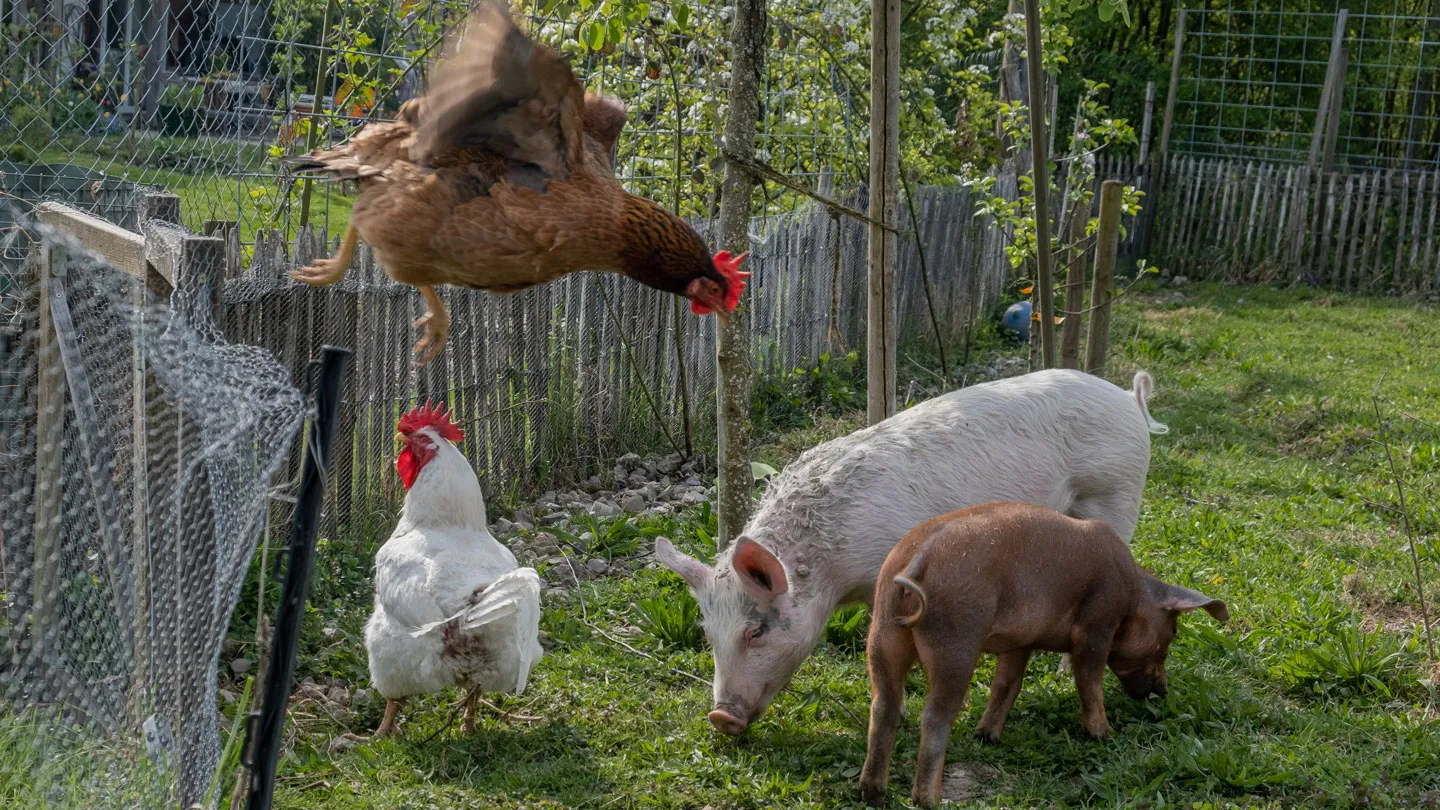Food & Climate
Much remains to be understood about the transmission of HPAI H5N1 among cattle, but it appears to be primarily driven by movements of infected cattle and potentially by personnel or equipment shared between farms. And spillover from poultry to pigs has also been seen. Even if pigs show no signs of disease, they represent a point of concern as pigs can catalyze genetic reassortment of avian and human influenza viruses, potentially creating new strains with pandemic potential.
Evidence also suggests spillover events have taken place between infected dairy farms and nearby poultry units. Other species have also been affected including cats and mice, according to Food and Agriculture Organization of the United Nations (FAO).
Amid a wave of reported avian influenza infections of cattle and other mammals, FAO has released new guidelines advising its members how to implement effective surveillance programmes for early detection of influenza in cattle, according a statement that “Food & Climate” platform received today.
Avian influenza
Since its emergence over two decades ago, the highly pathogenic avian influenza (HPAI) H5N1 virus has evolved into various clades. Clade 2.3.4.4b, first detected in 2021, has demonstrated a significant capacity to infect a wide range of species, including wild birds, poultry, and more recently both terrestrial and marine mammals, including tigers, bears, seals, and pet cats and dogs. Detections in dairy cattle in 2024, along with cases among farm workers exposed to infected cattle, underscore the urgent need to strengthen surveillance systems.
“Considering the worldwide spread of influenza A(H5N1) of clade 2.3.4.4b, the spillover from birds to cattle (and likely from cattle to humans) in other countries is expected,” according to FAO’s new publication, Recommendations for the surveillance of influenza A(H5N1) in cattle – with broader application to other farmed mammals.
FAO’s new guidelines follow a previous technical publication summarizing the emerging situation, knowledge gaps and recommended risk management actions, and emphasize the critical role of effective passive surveillance systems that encourage reporting of suspected cases from farmers and veterinarians. Enhanced reporting should be focused on high-risk areas such as those with dense poultry or dairy cattle populations or migratory bird activity, and consideration should be given to tapping into informal sources including market price changes, social media and community networks.
The guidelines are designed to improve early detection of spillover events and support evidence-based disease control measures, aiming to assist Members to optimize the use of limited resources through leveraging existing surveillance activities to achieve their surveillance objectives. These recommendations have broader application to other farmed livestock species.

Symptoms of the disease
Some infected animals have severe clinical signs and high mortality; those observed in affected cattle include decreased milk production, thickened colostrum-like milk, reduced food intake, lethargy, fever, and dehydration. In some animals, however, infection may lead to no clinical signs at all making it potentially hard to detect.
FAO’s recommendations propose the minimum surveillance objective for all countries ought to be to rapidly detect spillover events of HPAI H5N1 from birds to non-avian species, including cattle. If detected, veterinary and health professionals should be prepared to trigger a rapid response, tighten risk mitigation measures and generate evidence to support decision making and policy.
Basic but effective surveillance systems begin by encouraging farmers to self-report suspected diseases and take advantage of routine veterinarian visits to farms. These systems can be expanded through opportunistic testing during vaccination campaigns, monitoring reports from community and industry groups about reduced milk production and adopting risk-based sampling strategies.
These strategies should consider factors such as geography, wild bird migration patterns, seasonality, animal populations, and clinical observations throughout the dairy value chain. In the event that an HPAI H5N1 case in a cow is confirmed, public health authorities should be immediately informed and investigations initiated to determine if farm workers and other close human contacts have been exposed or infected. For WOAH-listed diseases, cases should be reported using WAHIS and technical experts are also encouraged to submit data to FAO’s Global Animal Disease Information System (EMPRES-i+).
The increasing intensity of highly pathogenic avian influenza virus (HPAIV) H5N1 clade 2.3.4.4b outbreaks have had a substantial impact on poultry and wildlife, according “Online library. WILEY“.
Wild bird movements have underpinned the rapid spread of this virus, which has swept across most continents within a 2-year time span. Compared to previous HPAIV subtypes and clades, some genotypes of H5N1 2.3.4.4b have significantly improved replication in wild birds and increased fitness through continuous reassortments, which has likely contributed to a shift in infection dynamics leading to the infection of a broader range of avian species.

In addition to their role in viral dissemination, wild birds are suffering huge losses associated with mass mortality events, and the scale of mortality among wild birds being in the millions rather than the tens of thousands reported. Thus, the recent panzootic is a serious conservation concern for a large range of wild bird species.

